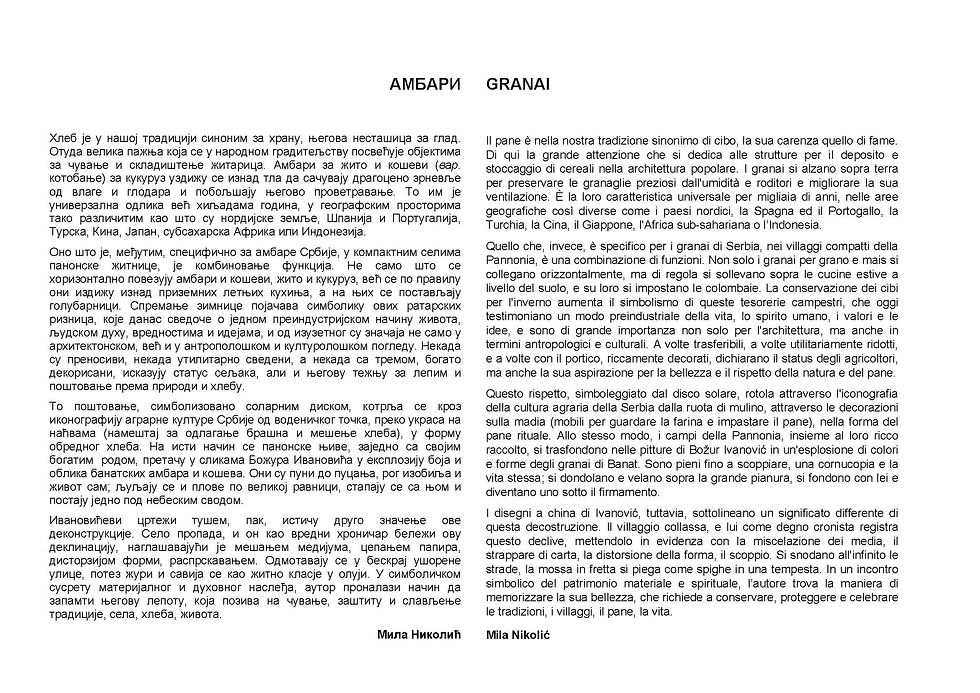GRANARIES
"Božur Ivanović: Ambari/Granai" @ EXPO Milano 2015
In our culture bread is a synonym for food, its shortage for hunger. Hence the great care that the traditional architecture dedicates to the facilities for grain storage. The granaries for wheat and corn are raised above the ground to preserve precious grains from moisture and rodents and to improve their ventilation. It has been their universal characteristic for thousands of years, in the geographical areas as diverse as the Nordic countries, Spain and Portugal, Turkey, China, Japan, Sub-Saharan Africa or Indonesia.
What is specific to the granaries of Serbia, in compact Pannonian villages, however, is a combination of functions. Not only the granaries and bins, wheat and corn, are horizontally connected, but as a rule they are raised above the ground level summer kitchens, and above them the pigeon houses are set. Conserving of food for winter enhances the symbolism of these farmers’ treasuries, which today bear witness to a preindustrial way of life, the human spirit, values and ideas, and are of great importance not only in architectural, but also in anthropological and cultural terms. Sometimes transferable, sometimes utilitarianly reduced, and sometimes with a porch, richly decorated, they express the status of the farmer, but also his aspiration for beauty and respect for nature and bread.
That respect, symbolized by the solar disc, rolls through the iconography of the agrarian culture of Serbia from watermill point to decorations on kneading-troughs (furniture for storing flour and kneading bread) to the form of ritual bread. In the same way, the Pannonian fields, together with their rich fruit, are pouring in the pictures of Božur Ivanović into an explosion of colours and shapes of Banat barns and granaries. They are full to bursting, a cornucopia of life itself; they move and float over the great plain, merge with it and become one under the heaven.
Ivanović’s ink drawings, yet, point out a different meaning of this deconstruction. The village collapses, and he as a diligent chronicler records this decline, highlighting it by mixing of media, paper tearing, shape distortion, bursting. The streets unwind endlessly, the strokes hurry and bend as heads of grain in a storm. In a symbolic meeting of the material and spiritual heritage, the author finds a way to remember its beauty, which calls for the protection, preservation and celebration of traditions, villages, bread, life.
Dr. Mila Nikolić, exhibition and catalogue author
Location:
Milan, Italy
Year:
2015
Category:
interior, exhibition design, curating
Type:
commission
Size:
40 m2
Client:
Pavilion of the Republic of Serbia
Arch. office:
MNA
Status:
exhibition curating and design
catalogue text and design
Project team:
Mila Nikolić


